You’ve heard us use the term Conservation Cultura. In using that term, it is an affirmation of how conservation is woven in our cultural practices and rooted in our history and traditions. Often it is not seen as a distinct identity, but one of many layers symbolic of the mestizaje that is characteristic of many Latino communities. As we engage in the conservation of today and the future, recognizing and valuing our conservation cultura is important to see to acknowledge how Latino communities are integral to the environmental movement.
With that in mind, here are 10 ways you maybe didn’t know Latinos have been a part of the environmental and conservation movement.

“In the immediate aftermath of the June 5, 1967 Tierra Amarilla courthouse raid, New Mexico National Guard tanks and troops scoured northern New Mexico in search of Reies Lopez Tijerina and other Alianza members. In this photo, troops chat with a Canjilon resident.” (Ray Cary/Journal File)
- You know about Rachel Carson, Silent Spring, and the banning of DDT. Did you know that the legal case for the banning of DDT was brought by Ralph Abascal from California Rural Legal Assistance on behalf of 6 farmworkers? (5 of them nursing mothers).

Braceros being sprayed with DDT. 1959 Photo by Henry Andersen via Vivian Price. PBS documentary Harvest of Loneliness.
- In the 1960’s Cesar Chavez and Dolores Huerta fought for the rights of farmworkers, but the environment was part of that work:Throughout the Southwest, how communities have lived in connection to the land informed their conservation practices. See the acequia system.

“Picture This: California Perspectives on American History,” a project of the Oakland Museum of California Museum.
- George Melendez Wright, a National Service biologist of Salvadorian descent was a key figure in getting the National Park Service to survey and examine park units for their ecological value and preservation in the late 1920’s.
- Latino naturalists have been contributing to ecological knowledge early on. Check out the story of Ynes Mexia (1870-1938) born in Washington D.C., grew up in Texas and Mexico—Sierra Club member in 1920.
- We have a history of caring about the land AND the people, stressing how our communities are affected by environmental disparities. The same day of the first Earth Day on April 22, 1970, Chicano Park was founded, demonstrating the connection among community, land, and cultura—and showing how for our communities the environment is part of social justice work. In 1981 the Southwest Organizing Project (SWOP) helped develop a Community Environmental Bill of Rights. These stories have been documented for some time—see this Race, Poverty, and Environment issue on Latinos and the Environment, from 1993.

Photo via sandiegohistory.org. A TURNING POINT
The Conception and Realization of Chicano Park by Kevin Delgado.
- Mujeres have often led the way, from Dolores Huerta, to Mothers of East LA, to Mujeres de la Tierra y más!

Josephine del Pozo, Henrietta Castillo, Lucy Delgado. and Amanda del Pozo. Photo by Mothers of East Los Angeles.
- Conservation is in our roots and cultura: What do you know about how the Mexica (Aztecs) were a zero-waste society? And we all know the cliché about the butter container in the fridge…we reuse and conserve!
- Many “new” practices like urban gardening, backyard chickens, snout to tail cooking, and the like— have been around in Latino communities since the original barrios. And we’ve always been outdoors!

“El Monte youth using the Rio Hondo as a recreational space.” 1940’s Photo: La Historia Historical Society. See more at http://www.kcet.org/socal/departures/san-gabriel-river/life-at-marrano-beach-the-lost-barrio-beach-of-the-san-gabriel-valley.html
- We recognize the cultural value of land and water beyond just being commodities or natural resources. El agua es vida, cuidala!

Agua Es Vida- Arte by Jesus Barraza. Visit dignidadrebelde.com to support this artist and artist collective.
- But pick an environmental issue and we’re there, from public land conservation to action on climate change, to a connection to the outdoors. And there’s been a history of community-based organizations you may never had the chance to hear their story, from the Tonantzin Land Institute in 1981 to Tierra y Libertad Organization today.








